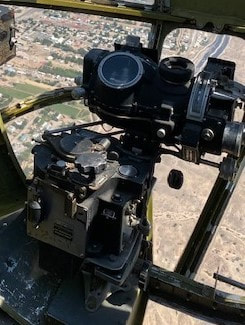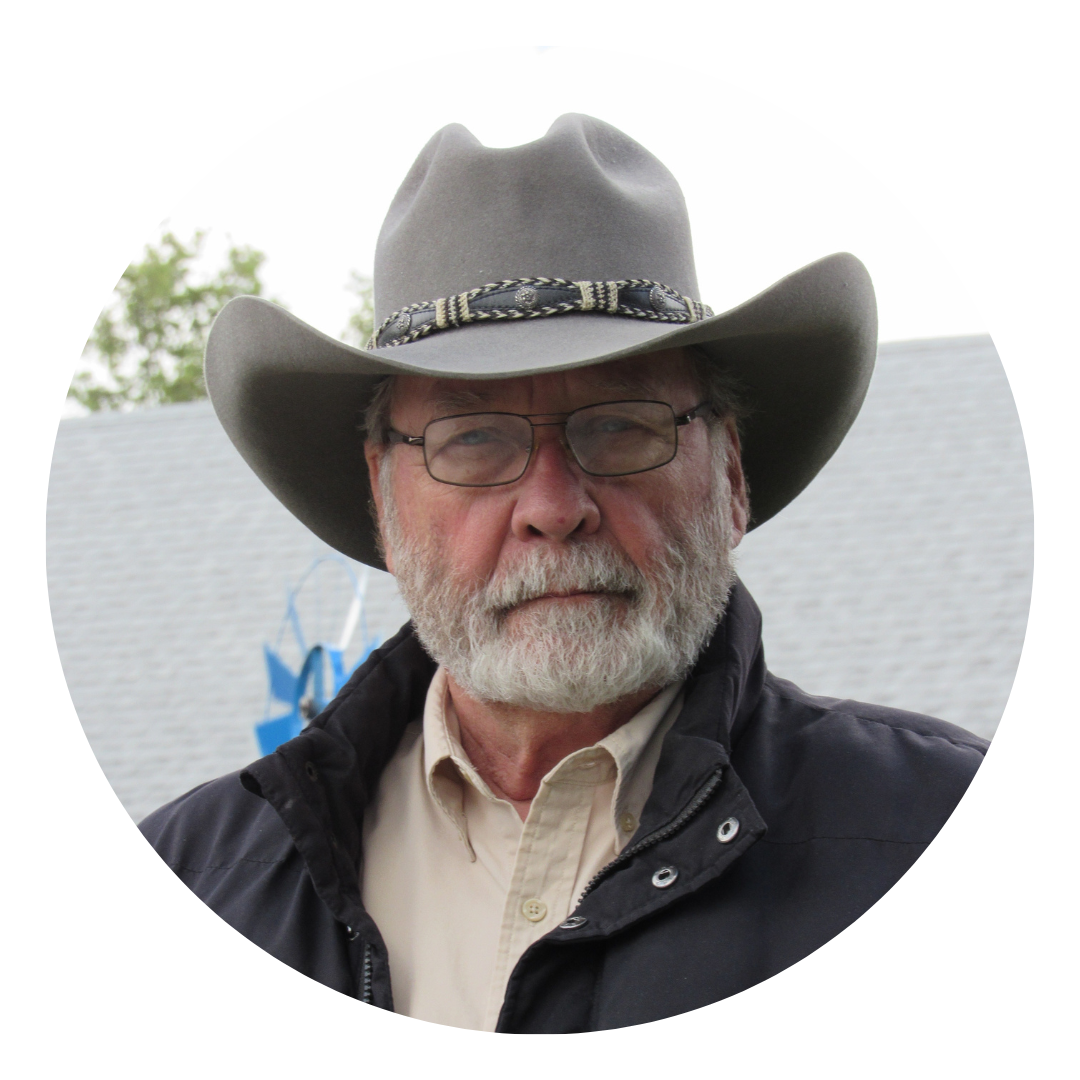 In 1927, the United States Department of War was granted permission to use a bridge over the Pee Dee River in North Carolina for aerial target practice. It was soon to be covered by a lake created by a new dam and was no longer needed. After five days, flying 20 missions a day, in perfect weather, at altitudes from 6,000 to 8,000 feet, the middle section of the bridge finally fell. In any practical sense, needing 100 attempts to destroy a single undefended bridge demonstrated that an aerial bombing offensive capability for use in wartime combat would require new equipment. What was needed was an aiming device that could be mounted inside an airplane, was easy to use, and would accurately deliver much bigger bombs on a target from an altitude between 20,000 and 35,000 feet above the ground, while the plane was going more than 200 miles an hour, in all types of weather, in strong turbulence, while the plane was slipping up, down, and sideways, was being surrounded by bullets and flak from attacking planes and ground artillery, all within the few seconds of timeframe when the target was achievable. Carl Norden, a Dutch engineer educated in Switzerland who emigrated to the U.S. in 1904 and working as a consultant to the Navy, responded with an innovative device. However, even after several versions and as famous as his final product would become, he produced what ultimately had WWII American flyers in Europe estimating that only 16% of all their bombs fell within 1000 feet of their aiming point. Delivering a bomb on target in combat conditions was, and is, a very, very difficult problem, and would someday only be answered by putting a real-time video camera on-board a remotely-piloted guided missile, but that’s a whole different story. Last weekend, I rode in the front gunner’s seat of a B-25 bomber. Anchored into the floor, within a few inches of the front window, was a Norden bombsight. Looking at my photo, it has two basic pieces – a rectangular box that is a gyroscopic stabilization platform, and a curvy mechanical calculator and sighting head attached on top. There’s a rubber eye bumper in the center of the head used by the bombardier to manipulate two crosshairs set into a telescope. In the Norden Mark XV bombsight, one crosshair represented the aim point, while the other represented the sighting point. Given control of the plane in the last few seconds, the bombardier adjusted his knobs until the two crosshairs met. When they did, the bombs were automatically released. I didn’t think to look into the bombsight, but I’m pretty sure that I would have hit my head on the front glass and would have taken one of my arms just to keep myself in place; I would have been on my knees. One of the early problems with the bombsight was the creation of the crosshairs. The Army Air Corps (the early Air Force) required that any bombsight be useable in the African desert and Pacific jungles, as well as Arctic regions. For example, the temperatures inside a B-17 flying at 25,000 feet above Germany in the winter was in the range of twenty-to-forty-degrees below zero; there was no heat inside the plane, initially forcing everyone to wear thick sheep-skin-and-leather clothing. They would later have electrically heated pants. This variation in temperature and humidity played havoc with the delicate crosshairs of the bombsight, which were obviously essential to its accuracy. Different man-made wire configurations were attempted, as was the web of black widow spiders. None of them proved reliable. The one substance that was found reliable at high altitudes and maintained its consistency in a variety of conditions was human hair. Fine blonde hair that had not been subjected to chemical treatments or hot curling irons was remarkably akin to black widow spider webbing but was more suitable for the bombsight application. In 1942, Mary Babnik Brown of Pueblo, Colorado, saw a War Department advertisement requesting “hair for the war effort.” The ad stipulated that the desired hair must be at least 22 inches long and had never been treated or heated. Mary’s hair was 32 inches long, and, in 36 years (since she was a toddler), had only been trimmed, not cut, nor had it been “permed” or excessively heated. She washed it with “pure soap” twice weekly, and combed it twice a day; it stretched to her knees when she combed it out. She normally wore it wrapped around her head in a braid. It was her pride and joy, and she sent in a sample. Mary was born in Pueblo to immigrants from Slovenia. Her father worked for the railroad and her mother was a domestic servant. When the father abandoned the family around 1920, Mary left elementary school to help support her family, eventually going to work for the National Broom Factory, where she lied about her age to be hired and then would work for the next 42 years. She began dancing as a hobby in her early teens and would go on to become a well-known dancer around town. She especially liked teaching GI service men how to dance. The War Department responded that her hair was perfect, and Mary agreed to donate it; she took no payment, wanting to support the war effort. She was told that her hair would be used in the making of scientific equipment to make precise measurement of humidity, key to the production of aircraft and other war equipment. It was not until 1987 that she learned that her hair had been used for virtually every Norden bombsight produced. On November 9, 1987, on her eightieth birthday, President Ronald Reagan sent a letter of congratulations and recognized her contribution. In 1990, she was honored at the United States Air Force Academy in Colorado Springs for her contribution with a plaque displayed in the Academy’s Air Force Museum. On November 19, 1990, Paul Harvey featured her in one of his The Rest of the Story episodes. Unfortunately, the company who built the Norden bombsight maintains that the crosshairs of the Norden bombsight were etched into a glass reticle; no human hair was used. Fortunately, once America hears a good story, it lasts forever.
0 Comments
Leave a Reply. |
AuthorDon Willerton has been a reader all his life and yearns to write words like the authors he has read. He's working hard at it and invites others to share their experiences. |

 RSS Feed
RSS Feed